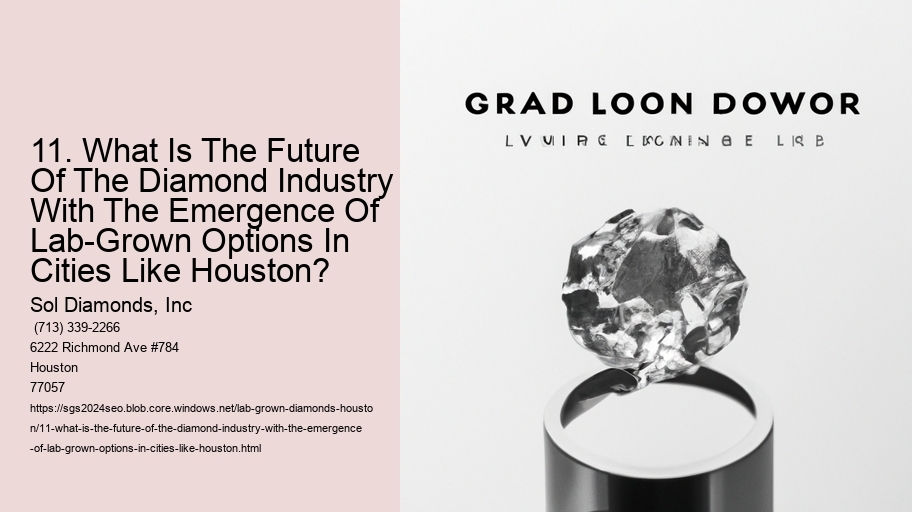Title: The Future of the Diamond Industry: The Impact of Lab-Grown Diamonds
What are Some Reputable Stores for Buying Lab-Grown Diamonds in Houston? .
The diamond industry has been a significant pillar of the global economy for many years. The emergence of lab-grown diamonds, especially in cities like Houston, has sparked a heated debate about the future of this industry. Lab-grown diamonds, also known as synthetic or cultured diamonds, are made in laboratories within weeks through high-pressure, high-temperature (HPHT) or chemical vapor deposition (CVD) processes. The rise of these diamonds has led to significant disruption in the industry, but also opened up new opportunities.
The most immediate impact of the increase in lab-grown diamonds is the potential decrease in the value of natural diamonds. Lab-grown diamonds are almost indistinguishable from mined diamonds and can be produced at a fraction of the cost. This affordability has made them an attractive alternative for many consumers, especially those who are ethically conscious and concerned about the environmental impact of diamond mining.
However, the future of the diamond industry is not necessarily bleak. Despite the increasing popularity of lab-grown diamonds, there is still a strong demand for natural diamonds. This is especially true in the luxury market, where the rarity and natural origin of mined diamonds add to their allure. Furthermore, many consumers still value the tradition and romanticism associated with natural diamonds.
The diamond industry is also adapting to this new trend. Many traditional diamond companies have started to incorporate lab-grown diamonds into their product lines, offering consumers a wider range of options. The De Beers Group, one of the world's largest diamond mining companies, has launched its own synthetic diamond brand, Lightbox Jewelry. The company also uses synthetic diamonds for industrial purposes.
As cities like Houston continue to emerge as hubs for lab-grown diamond production, the industry will also benefit from the growth of new jobs and investment in local economies. The lab-grown diamond industry is also driving advancements in technology and innovation, which could have wider applications beyond the diamond industry.
The emergence of lab-grown diamonds is also forcing the industry to address some of its long-standing ethical and environmental issues. The diamond industry has been criticized for its contribution to environmental degradation and human rights abuses. The rise of lab-grown diamonds is putting pressure on the industry to improve its practices and become more sustainable and ethical.
In conclusion, while the rise of lab-grown diamonds represents a significant challenge to the traditional diamond industry, it also presents opportunities for innovation, diversification, and improvement. The future of the diamond industry may look different, but it is not necessarily bleak. The key to survival will be the industry's ability to adapt to changing consumer preferences and to embrace new technologies and ethical practices.
